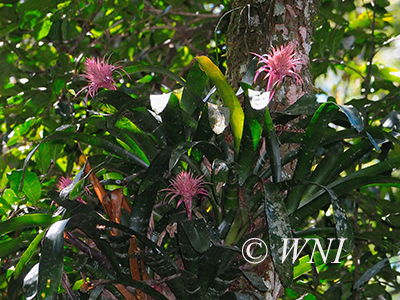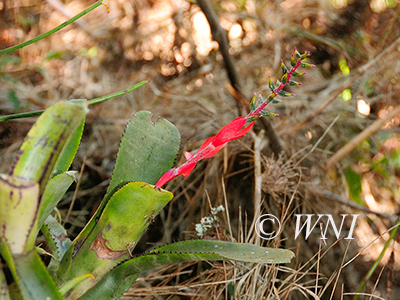| Bromeliaceae (Bromeliad) |
The Bromeliaceae encompass three subfamilies, 52 genera, and 3,320 species. They are widely distributed in the tropical Americas, with a few species found in the southern United States, and one species in West Africa. Bromeliads are found in a variety of habitats, from tropical and cloud forests to deserts, grasslands, and cliffs; sea level to 4,200 m. These are perennial herbs, epiphytic, lithophytic, or terrestrial. Stems vary from short to elongate. The largest bromeliad, Puya raimondii, reaches 9-10 m in height with a flower spike. Leaves are convex, waxy, needle-like or broad, with serrate or entire margins; usually spirally arranged, forming a water-impounding rosette, which retains some water even during the dry season. Leaves could be green, maroon or gold, often patterned with red, yellow, or white. Inflorescences are terminal or lateral, simple or compound, often with colorful bracts. Flowers are radially or bilaterally symmetric. Fruits are capsules or berries. A wide variety of animals is affiliated with the pools of water trapped by bromeliads, including species found entirely or nearly entirely in these plants, e.g., frogs, salamanders, crabs, snails, larval and adult insects, and other invertebrates.
 |
Aechmea fasciata | |
 |
Aechmea nudicaulis | |
| Unauthorized use of our images is NOT permitted. | ||
| Hotlinking or "pinning" of our images to websites is STRICTLY PROHIBITED. | ||
| Copyright © Michael Patrikeev - All Rights Reserved | ||
| |
||





